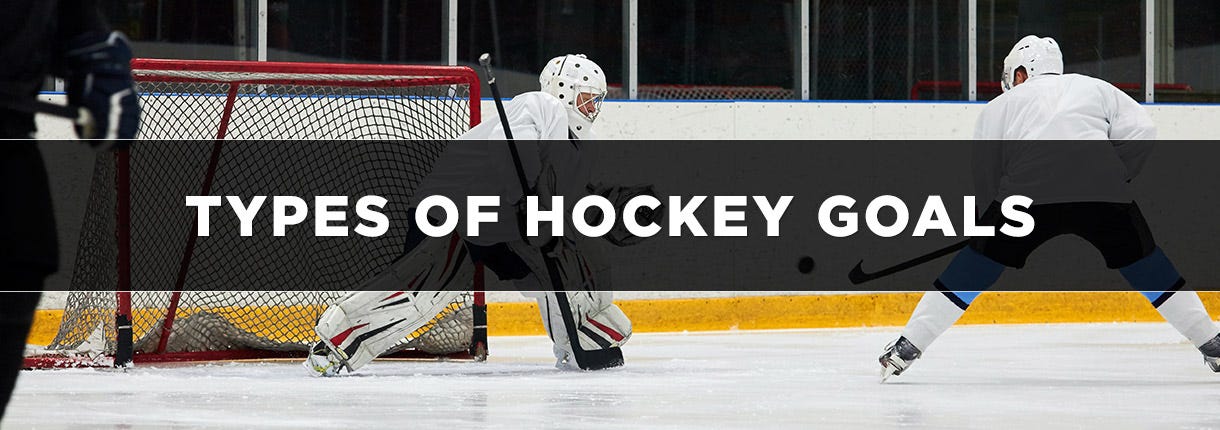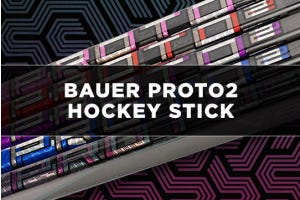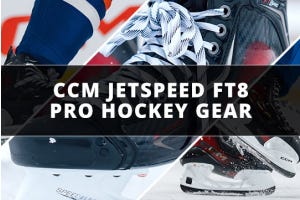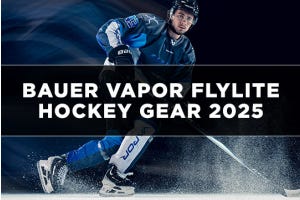Types of Hockey Goals

Ice hockey is a thrilling, fast-paced sport with multiple ways to score. From even-strength goals to penalty shots, understanding the differences between types of hockey goals can help you better appreciate the game and maybe even improve your skills as a player. Discover everything you need to know about every kind of goal, from power plays to empty netters, with this comprehensive guide.
Read on to learn more about the 6 main types of hockey goals – even-strength, power play, short-handed, empty netter, own goal, and what a penalty shot in hockey looks like – it’s time to get scoring.
In this article, we’ll cover:
What is a Goal in Hockey?
A goal is scored in hockey when the puck goes over the net line and under its bar after an attacking player shoots or deflects it into the opposing team’s net behind their goalie.
Goals are worth 1 point each and are used to decide who wins games. While they’re typically scored by shooting or redirecting a puck into an opponent’s net, on rare occasions goals can also be awarded (to the opposite team) if a player unintentionally shoots the puck into their own net.
Power-play Goal
A power-play goal occurs when one team has the upper hand due to a penalty committed by the opposing side that results in a numerical advantage for one side.
How much of an advantage depends on how many penalties were called simultaneously. For example, if 2 players from a team are sent to the penalty box at the same time for 2 minutes, the next 120 seconds on the ice would be “5 on 3.” 5 players from one team would have an advantage over the 3 players on the other. During this time, the team with more skaters can capitalize on their extra player-power and potentially score a “power play goal” while their opponents are short-handed.
Short-handed Goal
When one player is in the penalty box it creates a “short-handed” scenario with only 4 skaters on the ice until the penalty expires. If they’re able to score while they’re down a player, it’s known as a short-handed goal. These are often some of the most thrilling moments in hockey history.
Empty-net Goal
An empty net goal is exactly what it sounds like – shooting into an unguarded net. Empty nets occur when one team pulls their goalie so an extra player can go out on the ice. Pulling the goalie is usually only done toward the end of games when a team is trying desperately to score and wants the extra player-power on the ice.
Penalty-shot Goal
Do penalty shootouts count as goals in hockey? Yes! They do, and they’re exciting, too. Penalty-shot goals happen if officials call that a player was unfairly prevented from having a clear chance at scoring during action plays. A penalty shot in hockey allows a shooter to attempt a 1 v 1 matchup with the other team’s goaltender without player interference, as long as the shooter remains within designated lines set up by referees beforehand.
Check out the HockeyMonkey resource center to learn everything you need to know about the game.
Types of Goals FAQs
What are the 6 types of hockey goals?
The 6 types of hockey goals are:
- An even-strength goal
- A power-play goal
- A short-handed goal
- An empty-net goal
- An own goal
- A penalty-shot goal
What is a soft goal in hockey?
A soft goal in hockey is when a “weak” goal should have been easily saved but was missed by the goalie.
Is an empty net goal a short-handed goal?
Empty net goals are not considered a short-handed goal because there are still an even number of players on the ice (despite one team having a goalie instead of an extra player). The team that scores may have one less attacker on the ice trying to score, but they still have the same number of total players.
Find the Best Selection of Hockey Equipment at HockeyMonkey!
For the most comprehensive range of hockey supplies, HockeyMonkey is your go-to source. From sticks and skates to helmets and pads, HockeyMonkey has everything hockey players need. No matter your skill level, HockeyMonkey carries all the hockey gear and equipment you need, on and off the ice.
Discover the best hockey gear for your needs with HockeyMonkey. Our selection of top-quality products and expert advice can be a literal game-changer the next time you hit the ice.











